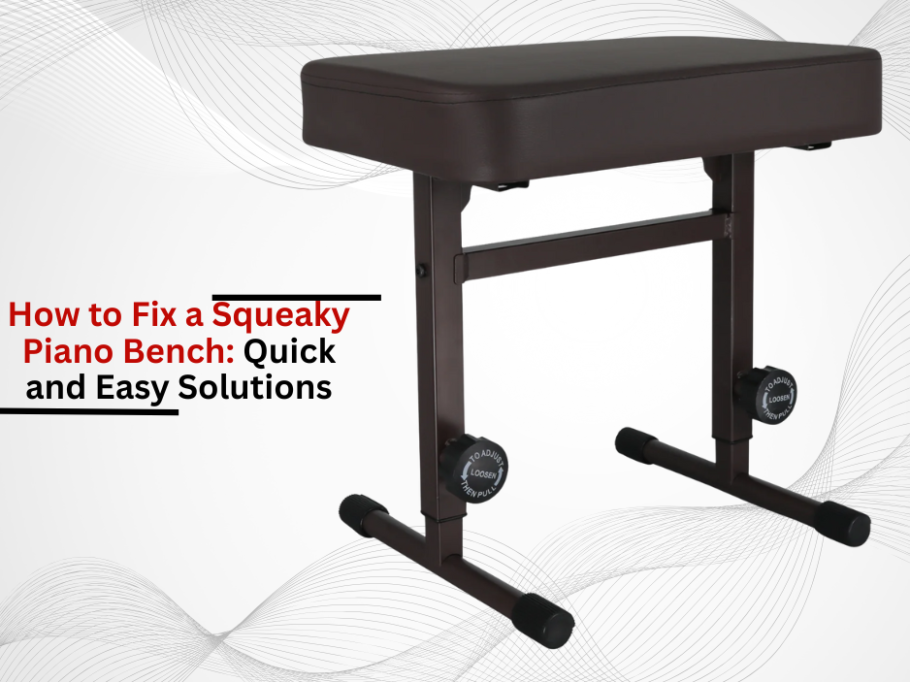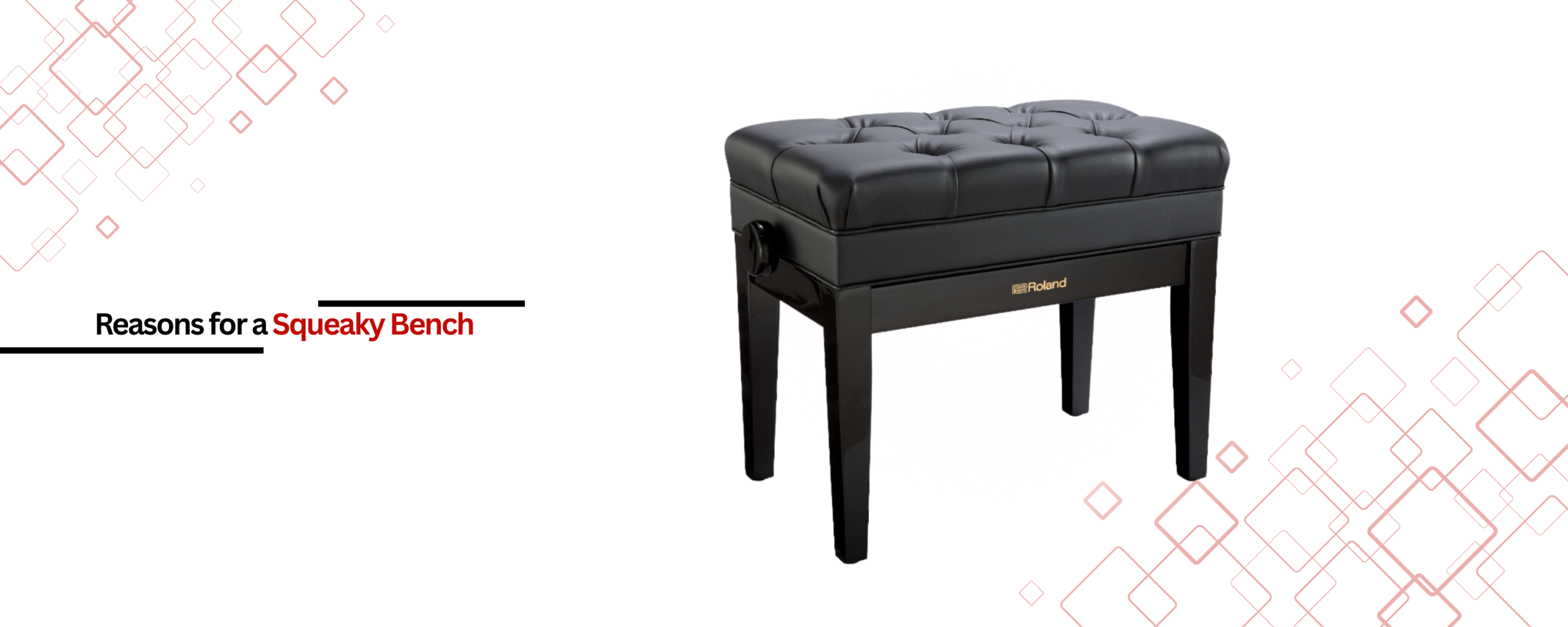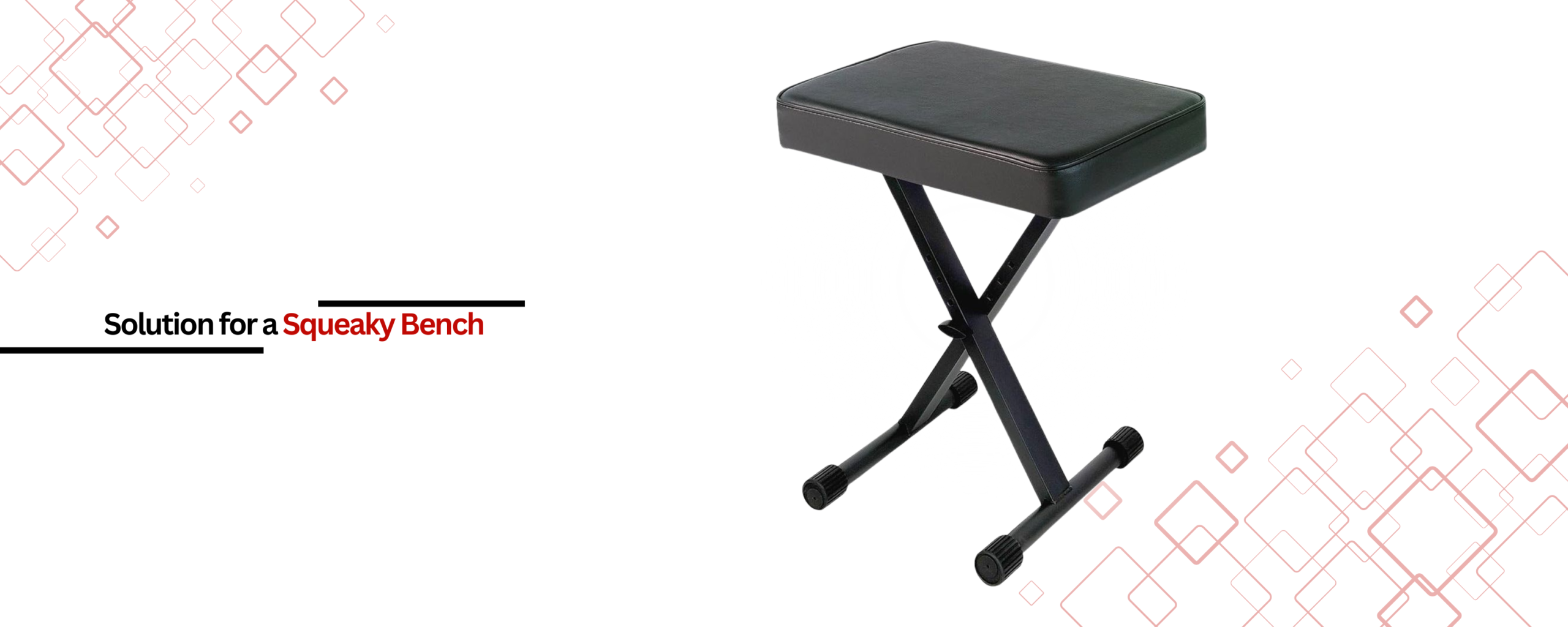A piano bench that squeaks can be a distraction during practice, performances, or even in a home studio. Although it seems insignificant, ignoring the issue can lead to worsened instability in the future. This guide describes specific strategies to eliminate the noise while allowing your bench to stay in good condition and serve its purpose without interrupting your music.
To know more, Read: Why a Good Piano Bench Matters More Than You Think
Primary Reasons for a Squeaky Bench
Identifying the source of a squeaky bench is vital for determining the best solution and addressing the issue effectively. The following are the most popular reasons for bench squeaks:
1. Loose Bolts and Joints:
Screws, hinges and other bolts may get loose over time due to movement or vibrations originating from your feet when you play. If they become loose, these parts may rub against one another and make noise.
2. Dry or Worn-Out Hardware:
Dust accumulation would make squeaky points like hinges, height adjustment mechanisms, or any point where metal touches metal become rusty or dry.
3. Wooden Frame Friction:
Wooden benches have the potential to make squeaky noises whenever joints begin rubbing against each other mechanically due to changes in humidity.
4. Worn Cushioning or Padding:
The quantitative sides of a seat and frame separated with foam or fabric might cause the wooden bench to make squeaky noises as they rub against each other.
Need this in bulk? You can get this from wholesale: piano benches
If you need this at the best prices, you might check out this new platform: piano benches
How to Fix Squeaky Comfort
1. Tightening Loose Hardware:
Process: Every bolt, screw, or hinge of the object in question needs to be examined and tightened to a certain level. One does not want to go overboard, as that runs the risk of damaging materials.
Tools Required: Varying sizes of hex keys, screwdrivers, or wrenches attached to the bench.
2. Applying Lubricant on Parts that Move:
Process: A certain amount of lubricant must be applied to the sliding parts, depending on the mechanism. All excess residue must be cleaned off; otherwise, the lubricant runs the risk of staining.
Tools Required: Paraffin wax, silicone spray, or powdered graphite.
3. Fortifying Wooden Joints:
Process: Loose joints on wooden benches must be disentangled, cleaned, and then reattached with wood glue. Then carpenter’s wax is rubbed along the edges to lessen friction.
Tools Required: Epoxy resin, wood glue, and carpenter wax.
4. Repairing Damaged Padding:
Process: Removal of the seat cushion leads to placing the soft pads/felts under the cushion but on top of the frame to reduce noise from the friction.
Tools Required: Replacement upholstery, adhesive felt pads, or foam inserts.
5. Strengthening the Materials:
Process: Areas with weak joints are bolstered with brackets, while rubber washers serve to dampen vibration when placed between the metal parts.
Tools Required: Corner braces, metal brackets, or rubber washers.
Preventative Maintenance Tips
With proper maintenance, a bench can last longer while also minimizing future squeaking:
- Monthly Checks: Joints and bolts are assessed for tightness.
- Quarterly Oil Application: Parts that move are to be lubricated every three to six months.
- Climate Control: The humidity of 40-60% ensures a wooden bench does not warp while hardwood is stored.
When to Consider Replacement
In the case of unending squeaking, the likely cause is excessive damage such as fractured supports or broken screw holes. In situations like these, replacing the bench will offer the stability and comfort intended.
Conclusion
Eliminating the squeak from a piano bench gives it better aesthetics and increases concentration while practicing or playing an instrument. On Stage, 5 Core, Roland, and Gleam brand benches actually do leave you with minimal maintenance to do because they are precision-crafted. Maintenance ranges from a bolt being tightened to fully replacing the model but it kept the bench functioning as intended, quiet so that it doesn’t interfere with music performance and removes any distractions—giving musicians the ability to let their creativity flow.



